Noob Factory Rolex Replica
Why Do I Only Value Rolex Watch Chains? Replica Watches Noob
I have never paid much attention to watch chains and watch straps. The reason is that there will be no problems if the metal watch chain is worn commonly. Although the belt needs to be replaced after being worn for a long time, we can change the watch strap in many places around us. You can customize it if it is normal or the strap is not good enough. Some domestic merchants who customize watch straps take little time, from selecting materials and colors to finishing the strap. The texture and quality of the custom-made straps are relatively good, and the price is reasonable. They can also be marked with corresponding watches. The brand logo provides peace of mind when it’s time to change the strap. However, among all watches, I only pay attention to Rolex bracelets because everyone knows that different Rolex models use different bracelets, and even if they are the same kind of bracelet, there are huge differences between bracelets from various periods. This leads to the Rolex bracelet significantly impacting the value of a Rolex watch and even determining whether to buy a Rolex. The stakes are high. Replica watches noob.
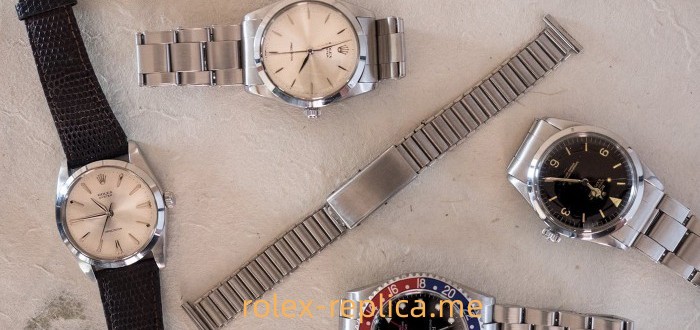
For a long time, Rolex bracelets were not made by Rolex themselves.
Even now, most watch brands only make their straps but purchase them from inside. Rolex is one of the few watch factories that can produce its bracelets, but initially, Rolex needed the ability to make its bracelets. Historically, Rolex purchased the first Rolex Oyster bracelet from outside. Today, the price of a bracelet is very high. Sometimes, the price of a bracelet would account for half of the entire watch. The chain cost is also very high, especially the tiny crown on the Rolex watch buckle. If it falls off, it must be replaced with a piece of chain). Rolex’s Oyster bracelet came from Gay Frères, a famous bracelet manufacturer, and the later Audemars Piguet Royal Oak bracelets were provided by Gay Frères. At that time, there were many watch chain manufacturers in the watch industry, but Rolex had always been fond of Gay Frères and continued to use watch chains produced by Gay Frères until 1998 when Rolex acquired Gay Frères.
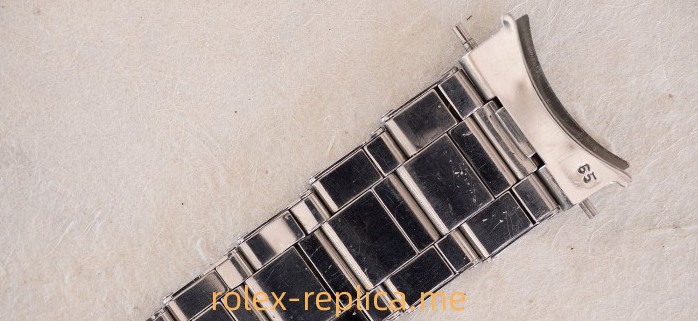
A significant improvement Rolex made to the bracelet was adding an arc-shaped link in front of it to integrate the bracelet and the watch case. This also became the beginning of the modern Oyster bracelet.
We now see that most Rolex watches are chain strap watches, with few belt models. But initially, Rolex Oyster bracelets were only used on bubble backs and early Rolex chronographs. Other watches can be equipped with optional straps, until one day (1952), Rolex significantly improved the Oyster bracelet, making the Oyster strap truly become what we are familiar with. The earliest Rolex bracelets were hung on the shaft between the lugs, and a gap existed between the bracelet and the case. The bracelet hanging on the shaft puts a lot of pressure on the trunnion of the watch, leaving a “safety hazard.” Rolex added a link at the end of the bracelet in 1952, now integrated with the watch case. From then on, Rolex metal bracelets began to dominate the world. Fake Rolex watches.
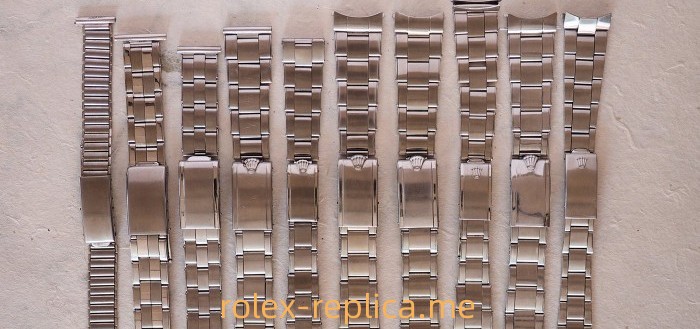
Rolex Oyster bracelets from different periods.
So far, the Rolex Oyster bracelet has gone through three generations, and the Oyster bracelet of the watch currently on sale is an improved version of the third generation.
The first generation Oyster bracelet: The first generation Oyster bracelet is characterized by a “screw bracelet.” We can easily see that there is a screw on each link of the first-generation Oyster bracelet (both ends of the link), which is inserted at both ends of the link.
Second-generation Oyster bracelet: The second-generation Oyster bracelet is characterized by a “folding bracelet.” It is made of a metal piece folded inward from both sides. The shaft threaded into the watch chain is invisible from the outside and hidden inside the watch chain’s links.
The third-generation Oyster bracelet: this is the style we see now. The third representative bracelet is characterized by the “sealed bracelet.” The bracelet links are sealed on the sides; there are no screws or folds, and it is a single link. The current Rolex Oyster bracelet has this appearance (I just said the appearance is the same), a characteristic of the third generation.
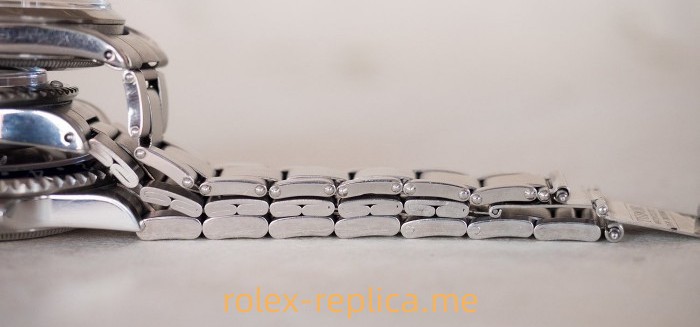
This compares three generations of Rolex Oyster bracelets, from top to bottom, from the first to the third generation.
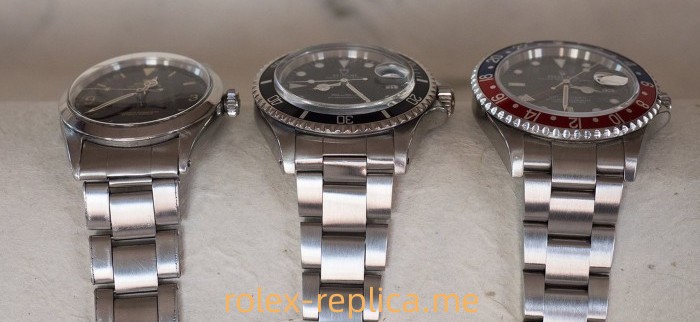
Here is a comparison of Rolex’s three representative chains, from left to right, from the first to the third generation.
From hollow to solid
Nowadays, most of our standard Rolex models use third-generation Oyster bracelets. The most important issue to pay attention to in the third-generation Oyster bracelet is whether it is hollow or solid. The links of the third-generation Oyster bracelet are sealed from the side, but the original ones were hollow. The outside is sealed, but the inside is hollow. Whether intense or not, dirt and evil practices are trapped inside the hollow links, especially in the summer when there is a lot of sweating and oil production. Rolex itself should be aware of this problem, so around 2010 (I think it may be a little earlier than 2010), it began replacing the hollow bracelet with a solid one. The entire bracelet link is a solid metal piece.
Moreover, except for the links, the connection between the Oyster bracelet and the watch case was hollow before but later changed to a solid one. Therefore, for example, the old model 16622 and the latest model 116622 have chain links for new and old yachts. The old one is hollow, and the new one is solid (the same is true for water ghosts). There is a reason why the price of the new one is higher than that of the old one. The latest model uses more materials than the previous one.
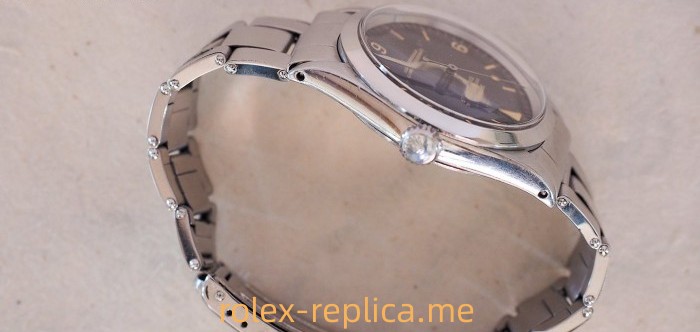
Rolex’s first-generation “screw” Oyster bracelet, we can see the screws on the bracelet and the “piercing ears” used on the lugs.
There is a problem to be aware of when collecting vintage Rolexes. I learned that some people take their antique Rolex collections to official Rolex after-sales service for maintenance. Rolex officials replace some old parts with new ones during maintenance and repair. Most of us think Rolex’s service is very excellent and meticulous. But it may not be good news for antique watch lovers because their watches are no longer original.
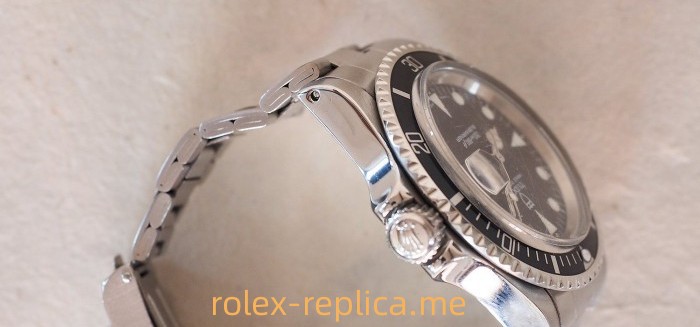
Rolex’s second-generation “folding” Oyster bracelet shows that the bracelet links are made of a metal piece that is repeatedly folded, and the lugs are also pierced.
I have never paid attention to the bracelets of any other watches except Rolex because the condition of Rolex bracelets will directly affect the sale of watches. One of the most prominent features of Rolex watches is the recognizability between various models. Rolex seems to have a similar appearance, but through some details and small places on the watch, you can tell whether it is a new or old model at a glance. The bracelet is one of the most noticeable features distinguishing new Rolex models from older ones. Many Rolexes are circulating in the market now, and the old models with 5-digit numbers and the latest models with 6-digit numbers are the largest. The yachts above 16622 and 116622 are a perfect example. There is almost no difference between the watch heads of the two yachts, and we cannot see small details such as the shock absorber and hairspring on the movement, so we can only see it through the bracelet. The bracelets of 16622 and 116622 are different, which can be seen at a glance. We often see this situation. The watch dealer sells a yacht with the model number 116622. The price is meager (lower than the price of the general 116622), which makes people excited. After looking at the watch chain, it turns out it is 16622. The model number needs to be corrected. This is why I don’t know the bracelets of other watches, but I only know a little about Rolex bracelets.
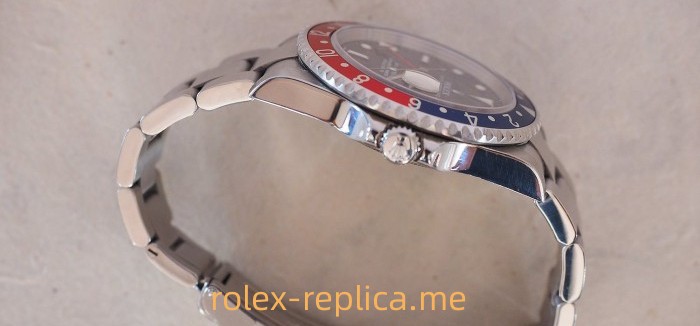
Rolex’s third-generation “sealed” Oyster bracelet, the bracelet is sealed, and the lugs are also “mil” without holes.
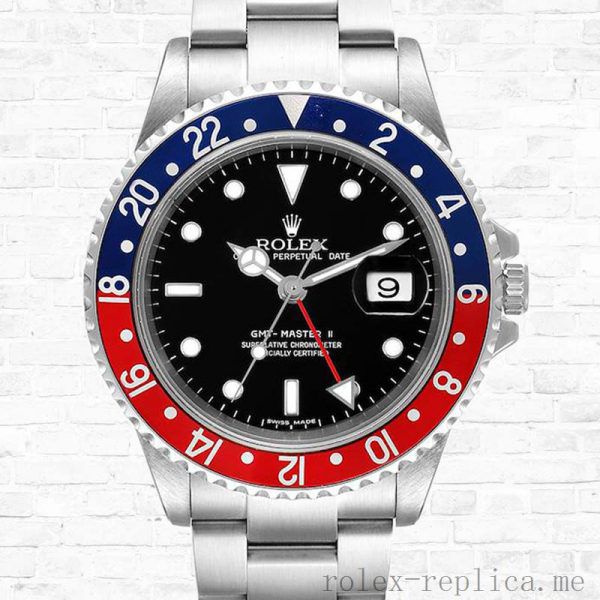
Gender: Men’s
Model: 16710PEPSI
Case Thickness: 15mm
Case Color: Silver-tone
Series: Gmt Master Ii
Engine: Rolex Calibre 2836/2813
Brand: Rolex
